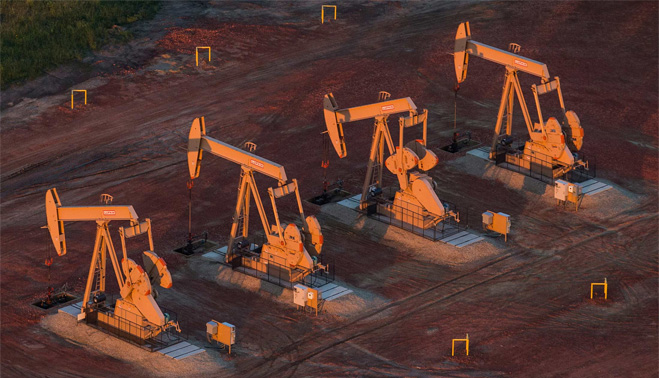![]() Home > World Business
Home > World Business
50-Year-Old Australia Oil Fields Spurned In Cheap Crude Age

Photographer: Andrew Burton/Getty Images
![]() June 17th, 2016 | 04:00 AM |
June 17th, 2016 | 04:00 AM | ![]() 1508 views
1508 views
AUSTRALIA
They’re among the oldest oil fields in Australia still in production. Now they are proving superfluous to some of the world’s biggest producers that are purging high-cost assets to weather crude’s collapse.
While the dozen or so depleted fields in the Gippsland Basin in southeast Australia are hardly any company’s crown jewels -- combined they produce 19,000 barrels of oil equivalent a day -- they once put Australia on the map for energy investors and still include the country’s largest single find, according to Exxon Mobil Corp., which is now interested in selling them with its joint venture partner, BHP Billiton Ltd.
Energy giants are shutting or selling aging fields from the North Sea to China as investing to maintain them makes less sense nearly two years into the biggest oil crash in a generation, with prices still more than 50 percent below the level of June 2014. The bust was exacerbated by the Organization of Petroleum Exporting Countries’ Saudi Arabia-led strategy of trying to win market share from higher-cost producers.
“Australia is a mature basin with a limited reserve base. This means high cost,” Amrita Sen, chief oil economist for Energy Aspects Ltd. in London, said by e-mail. “In the current oil price environment with everyone focused on cost cutting, it makes sense for majors to divest while PE companies may pick it up for the short term.”
Kingfish Field
Among the fields being considered for sale is Kingfish, discovered in 1967 and still the largest find in the country’s history, according to Exxon’s Esso Australia unit. Esso and BHP are looking for parties with experience to capture the remaining potential of the assets, Esso said in a statement.
BHP and Esso, which both have a 50 percent stake in the venture, drilled the first well in the region in 1965. Since then it has produced more than 4 billion barrels of oil and 8 trillion cubic feet of gas, according to Esso. The oil production amounts to about 44 percent of all of Australia’s oil production since 1965, according to data from BP Plc. The country’s output has fallen by more than half since peaking in 2000.
The operation “put Australia on the map for global oil and gas industry investors,” Exxon said in a presentation on the Australian Institute of Energy’s website.
As of 2007, Gippsland fields had produced 90 percent of their initial oil reserves, according to a report on an Australian government website. Selling aging energy assets fits with BHP’s strategy to divest “non-core, late life assets,” the producer said in a statement.
North Sea
Royal Dutch Shell Plc is in talks with potential buyers for some North Sea assets, people familiar with the matter said in May. Sinopec Shengli Oilfield Co., one of China’s major producers, said it would shut four of its least profitable fields to save as much as 130 million yuan ($19.9 million) in operating costs, according to a statement on its Weibo account this year.
Brent oil prices have fallen 57 percent in the past two years amid a supply glut. The global benchmark grade traded at $48.25 a barrel at 9:10 a.m. London time.
Melbourne-based BHP’s Bass Strait unit, which includes the mining giant’s stake in the Gippsland Basin operation and a second joint venture, may be worth about $1 billion, Citigroup Inc. wrote in a May 27 note to clients. The unit’s liquids production is in decline, analysts including Sydney-based Clarke Wilkins wrote in the note.
“At current low oil prices, companies are selling assets anywhere in the world if they have problems generating profits with them,” Philipp Chladek, London-based senior industry analyst for Bloomberg Intelligence said by e-mail. “This is not Australia-specific. There are plenty of promising exploration assets in Australia.”
Source:
courtesy of BLOOMBERG
by Dan Murtaugh and David Stringer
If you have any stories or news that you would like to share with the global online community, please feel free to share it with us by contacting us directly at [email protected]